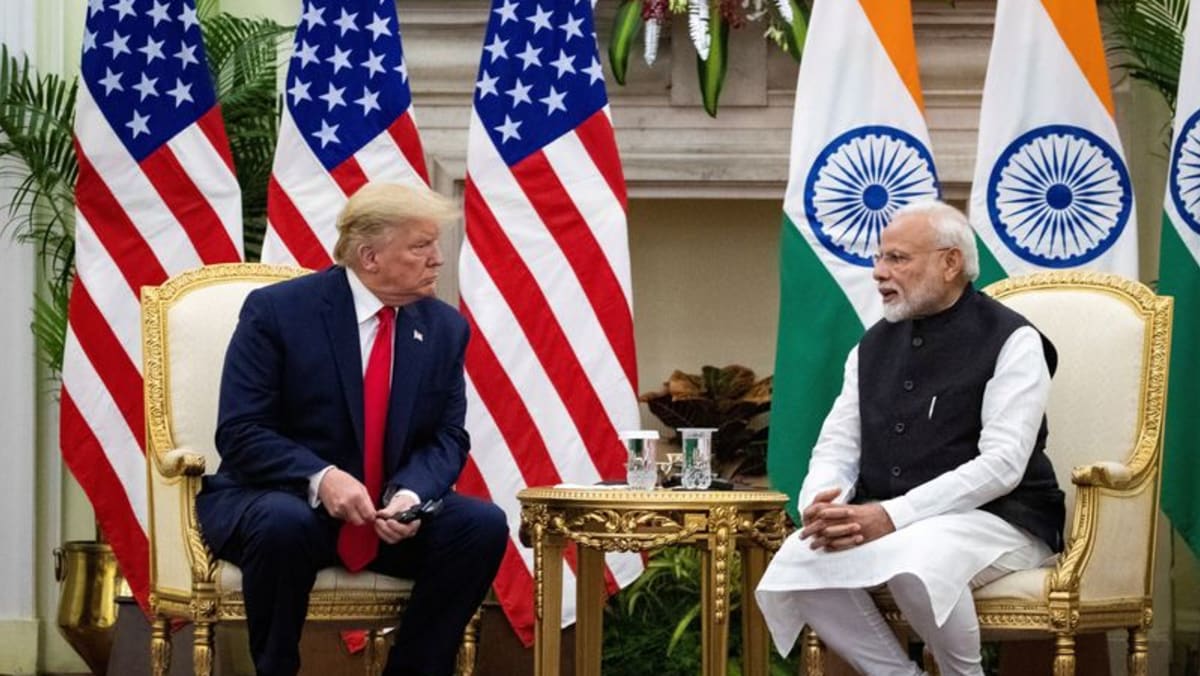Asia
India has ‘enormously high’ tariffs, White House economic adviser Hassett says

Introduction to Tariff Rates and Trade Policies
Tariff rates are a critical component of a nation’s trade policy, influencing the flow of goods, economic growth, and international relations. According to data from the World Trade Organization (WTO), India’s simple average tariff rate stands at 17%, significantly higher than the 3.3% average tariff rate of the United States. This disparity highlights the different approaches nations take to protect their industries, regulate imports, and balance trade. On a trade-weighted basis, India’s tariff rate is approximately 12%, while the U.S. rate is around 2.2%. These figures suggest that India imposes higher tariffs to shield its domestic industries, particularly in sectors like agriculture and manufacturing, which are vital to its economy. On the other hand, the U.S. maintains relatively lower tariffs, reflecting its emphasis on open markets and global trade.
India’s Tariff Policy: Protecting Domestic Industries
India’s high tariff rates are largely a result of its strategy to safeguard domestic industries, especially in sectors where local businesses are still developing or are vulnerable to foreign competition. For instance, India has imposed high tariffs on agricultural products, electronics, and steel to protect its farmers, manufacturers, and small businesses. These measures are designed to ensure self-sufficiency and reduce dependence on imported goods. However, critics argue that such high tariffs can stifle competition, limit consumer choice, and inflate prices for domestic consumers. Additionally, India’s tariff structure has been a point of contention in international trade negotiations, with partner countries often urging India to reduce its tariffs to promote freer trade and mutual economic benefits.
The U.S. Tariff Policy: A Focus on Open Markets
In contrast to India’s protective tariff policy, the United States has historically embraced a more open-market approach, with relatively low tariff rates. The U.S. simple average tariff rate of 3.3% reflects its commitment to free trade and its role as one of the world’s largest importers. On a trade-weighted basis, the U.S. tariff rate is even lower, at 2.2%, indicating that the tariffs applied to the most frequently traded goods are minimal. This approach has enabled the U.S. to benefit from cheaper imports, stimulating consumer demand and keeping inflation in check. However, the U.S. has occasionally imposed higher tariffs on specific products, such as steel and aluminum, to protect domestic industries deemed strategically important or to address trade imbalances.
Trump Administration’s Steel and Aluminum Tariffs
One notable example of the U.S. imposing higher tariffs was during Donald Trump’s presidency, when tariffs of 25% and 10% were levied on imported steel and aluminum, respectively. These tariffs were introduced under Section 232 of the Trade Expansion Act of 1962, which allows the president to impose tariffs for national security reasons. The Trump administration argued that a strong steel and aluminum industry was essential for national defense and that domestic production was at risk due to unfair foreign competition. As a result, the tariffs were intended to boost U.S. steel and aluminum production and reduce reliance on imports. This policy led to increased domestic steel production, as U.S. steelmakers expanded their capacity in response to the protected market.
Controversy Over Tariff Waivers
However, the Trump administration’s steel and aluminum tariffs became controversial when the Biden administration began granting waivers to certain countries, allowing them to export steel and aluminum to the U.S. without paying the tariffs. Kevin Hassett, a former economic advisor to President Trump, criticized this move, stating that the waivers undermined the original intent of the tariffs. Hassett pointed out that the waivers were being granted in large numbers, with "hundreds and thousands of waivers" approved, which he argued weakened the protections for U.S. steel and aluminum producers. Trump, according to Hassett, was concerned that these waivers would negate the gains made by the domestic steel industry during his presidency. Hassett suggested that Trump might reconsider the waivers, potentially reimposing tariffs in the future if he were to return to office.
Comparison of India and U.S. Trade Policies
The differing tariff policies of India and the U.S. reflect their unique economic priorities and challenges. India’s high tariffs are part of a broader strategy to industrialize and reduce dependence on imports, while the U.S. has generally favored lower tariffs to promote consumer access to affordable goods and maintain its position as a global trade leader. However, both countries have shown a willingness to impose tariffs to protect specific industries, such as steel and aluminum in the U.S., or to safeguard domestic production in critical sectors. The debate over tariffs highlights the complex balance nations must strike between protecting their industries and promoting free trade. As global trade dynamics evolve, both India and the U.S. will need to adapt their tariff policies to address new challenges and opportunities in the international marketplace.
Conclusion: The Future of Tariff Policies
The discussion over tariff rates and trade policies in India and the U.S. underscores the intricate interplay between economic strategy, domestic politics, and international relations. While India’s high tariffs are aimed at fostering self-reliance and protecting vulnerable industries, the U.S. has traditionally championed lower tariffs to support open markets and consumer interests. However, the U.S. steel and aluminum tariffs introduced during the Trump administration reveal that even nations with a history of free trade are willing to take protective measures when they perceive a threat to national security or domestic industries. As both countries navigate the complexities of global trade, their tariff policies will likely continue to evolve in response to changing economic conditions, political priorities, and international negotiations.
-

 Money3 days ago
Money3 days agoConsumer Financial Protection Bureau Adds Error Message To Home Page
-

 Money2 days ago
Money2 days agoWinning Content Strategies For Wealth Managers
-

 Australia1 day ago
Australia1 day agoTropical Cyclone Zelia intensifies to category 2 storm
-

 Asia1 day ago
Asia1 day agoWhat you need to know about 2024 YR4, the asteroid that could hit Earth in about eight years’ time
-

 Entertainment23 hours ago
Entertainment23 hours agoPrince Harry and Meghan Markle’s Best Moments and Photos From the 2025 Invictus Games
-

 Australia18 hours ago
Australia18 hours agoTropical Cyclone Zelia intensifies to category five system off Pilbara coast
-

 Politics1 day ago
Politics1 day agoDozens of religious groups sue to stop Trump admin from arresting migrants in places of worship
-

 Entertainment3 days ago
Entertainment3 days agoEvery Celebrity Who Attended the 2025 Super Bowl: A Guide to the A-Listers at the Big Game











